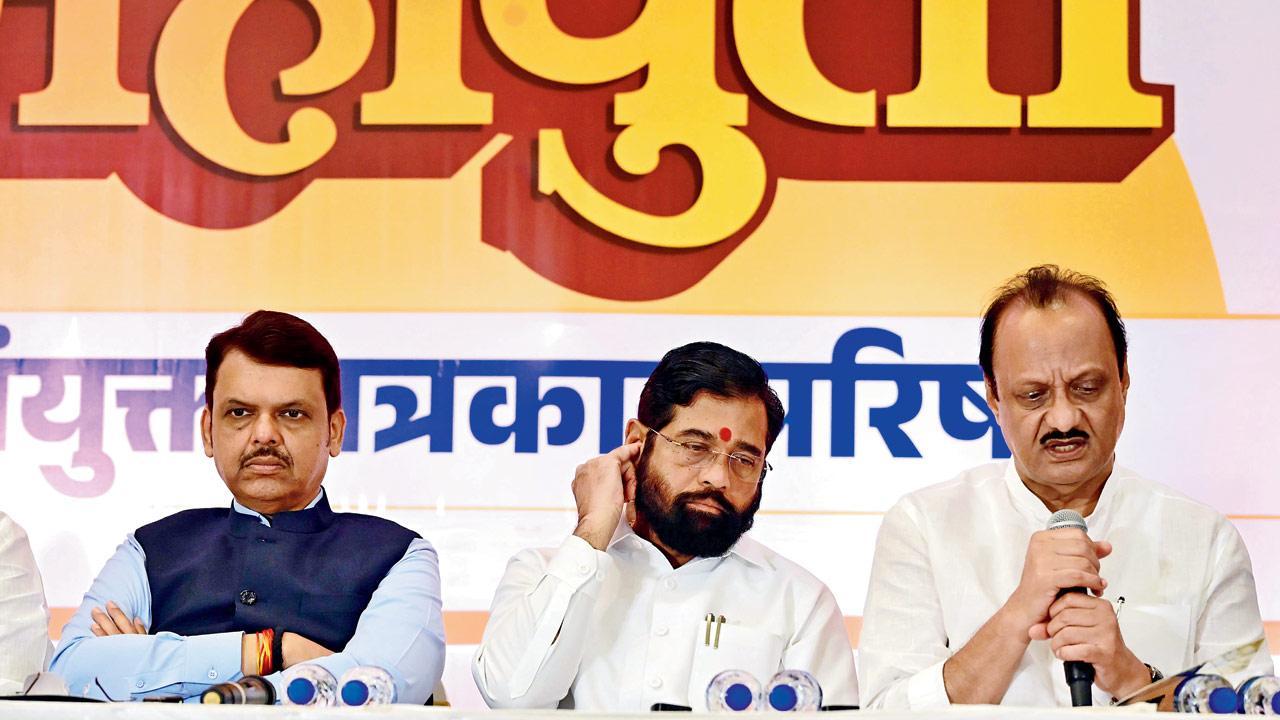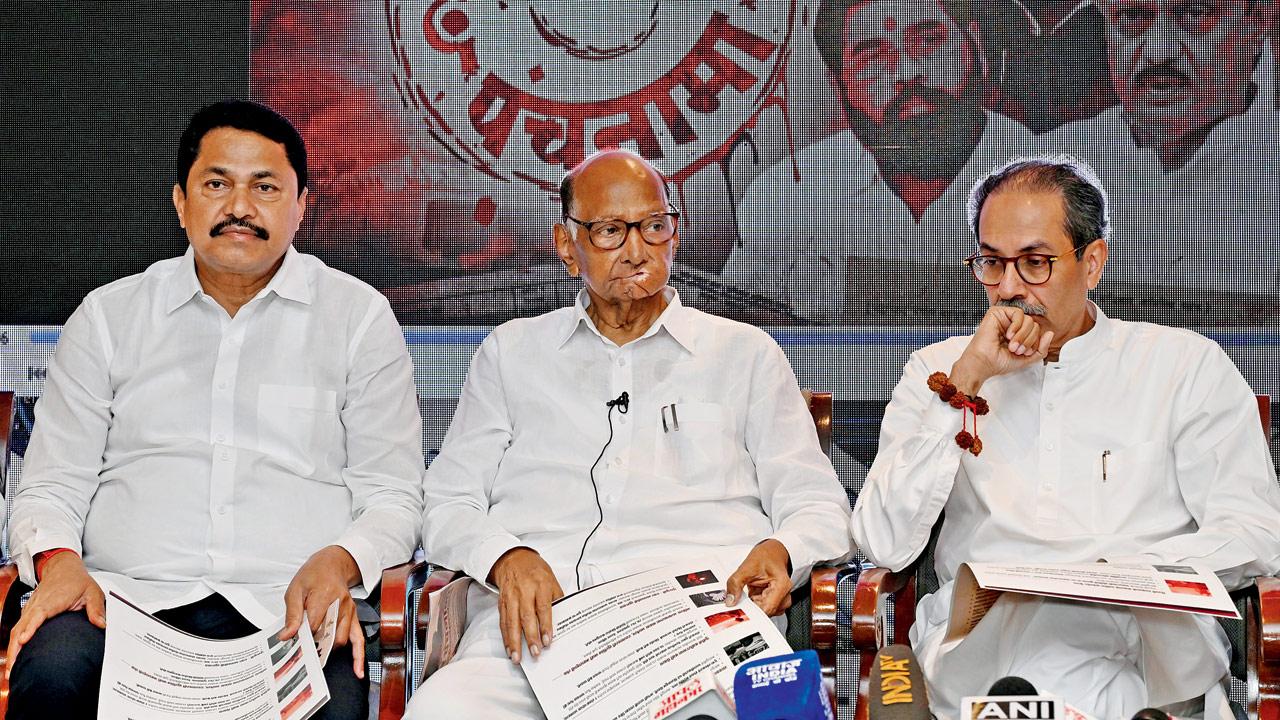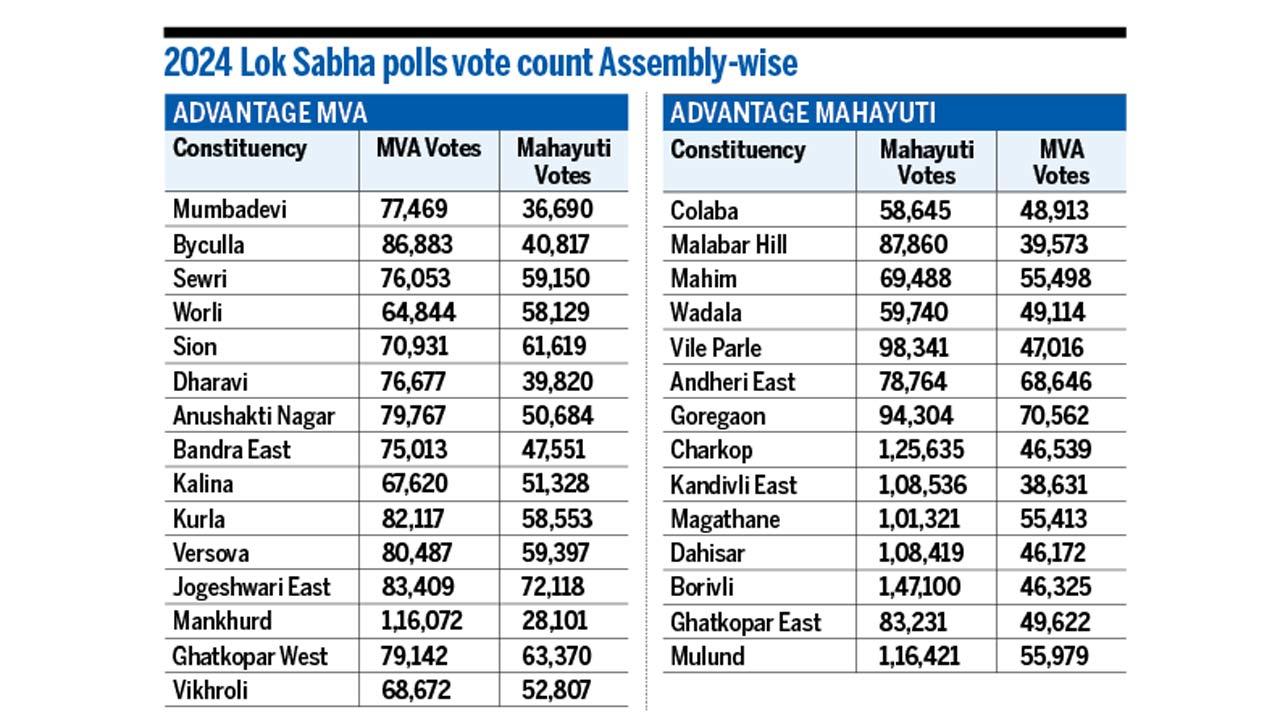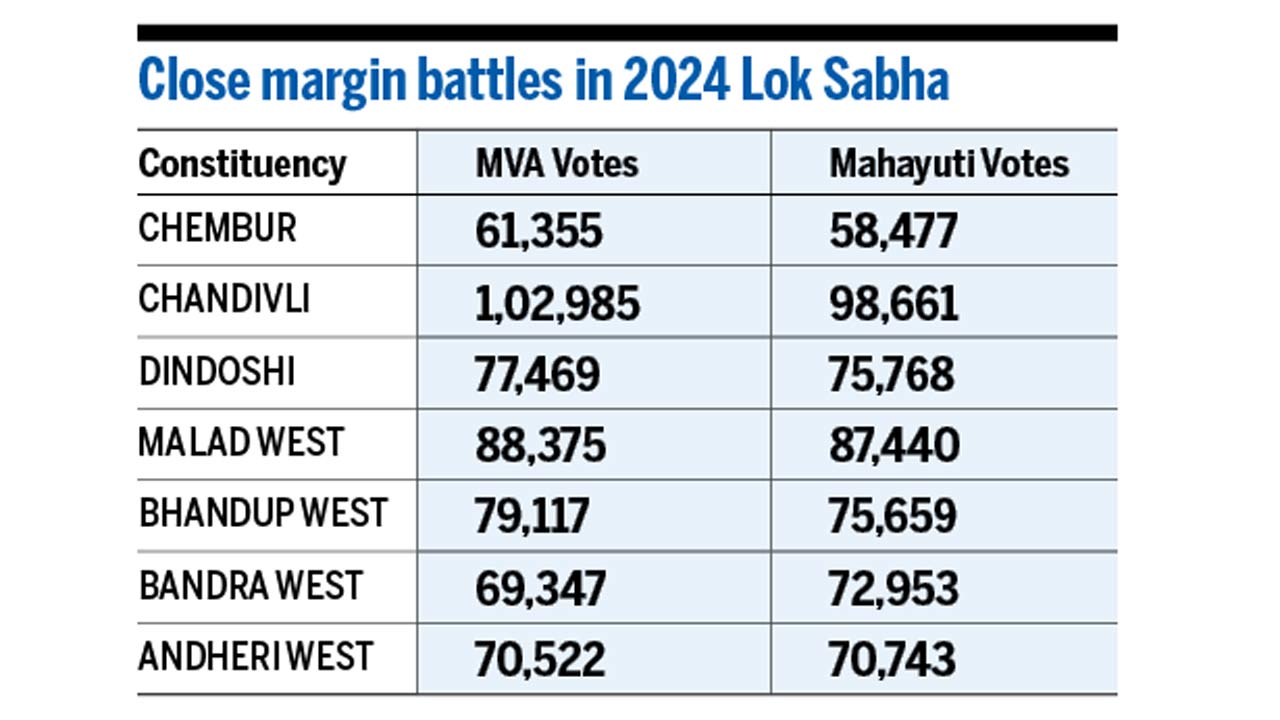As Mumbai's election campaigns reach their peak, the MVA (Maha Vikas Aghadi) is predicted to have an edge in 20 out of 36 Assembly constituencies, while the Mahayuti holds an advantage in 16. Lok Sabha results from May indicate a tight race, with factors such as local issues, vote polarisation, and candidate performance.

DCM Devendra Fadnavis, CM Eknath Shinde, DCM Ajit Pawar at a press conference. File Pic/Shadab Khan
As election campaigns of all political parties reach their peak and there is a neck-to-neck fight in most constituencies in Mumbai, results from the Lok Sabha election in May suggest that the MVA (Maha Vikas Aghadi) may have an edge in 20 out of 36 Assembly seats, while the Mahayuti holds an advantage in 16 seats in the current Assembly election.
ADVERTISEMENT
Although statistics from the Lok Sabha election cannot precisely predict the outcome, they provide a fair indication. In the 2019 elections, the Assembly-wise Lok Sabha and Vidhan Sabha results were nearly identical across the state. In the May 2019 general election, undivided Shiv Sena and BJP won all six seats in Mumbai, securing a majority of votes in 30 out of a total of 36 Assembly-wise areas. In the November 2019 Assembly election, BJP won 16 seats, Shiv Sena won 14, Congress secured four, and NCP and SP each won one seat.

MPCC President Nana Patole, NCP-SP National President Sharad Pawar, and Shiv Sena (UBT) Chief Uddhav Thackeray. File Pic/Satej Shinde
This time, during the Lok Sabha election, the BJP-Shiv Sena Mahayuti won two seats in Mumbai, while the Shiv Sena (UBT) and Congress won four. In an Assembly-wise breakdown of votes, the MVA held a slight edge, gathering more votes in 20 Assembly constituencies, including Mumbadevi, Byculla, Bandra East, Sion, Dharavi, Kurla, Kalina, Ghatkopar West, Vikhroli, Versova, and Mankhurd. Mahayuti led in 16 constituencies, including Colaba, Malabar Hill, Wadala, Vile Parle, Charkop, Goregaon, Dahisar, Magathane, Kandivli East, Ghatkopar East, and Mulund. In seven constituencies where the MVA led in five, the margin of votes was less than three thousand; hence, results may depend on other factors, as well as the performance of individual candidates. These constituencies include Chembur, Chandivli, Dindoshi, and Bhandup West.

The results hinge on factors such as manifesto promises, vote polarisation, seat allocations, local issues, temporary concerns, and voter turnout. However, the Mahayuti might not replicate Sena-BJP's success in the 2019 Assembly election. In 2019, the winning margins in the Lok Sabha results were substantial and reflected in the Assembly-wise seats. In this year’s election, three out of six candidates won with a margin of less than 30,000 votes, which means results may vary due to other factors and the current political climate.

 Subscribe today by clicking the link and stay updated with the latest news!" Click here!
Subscribe today by clicking the link and stay updated with the latest news!" Click here!







